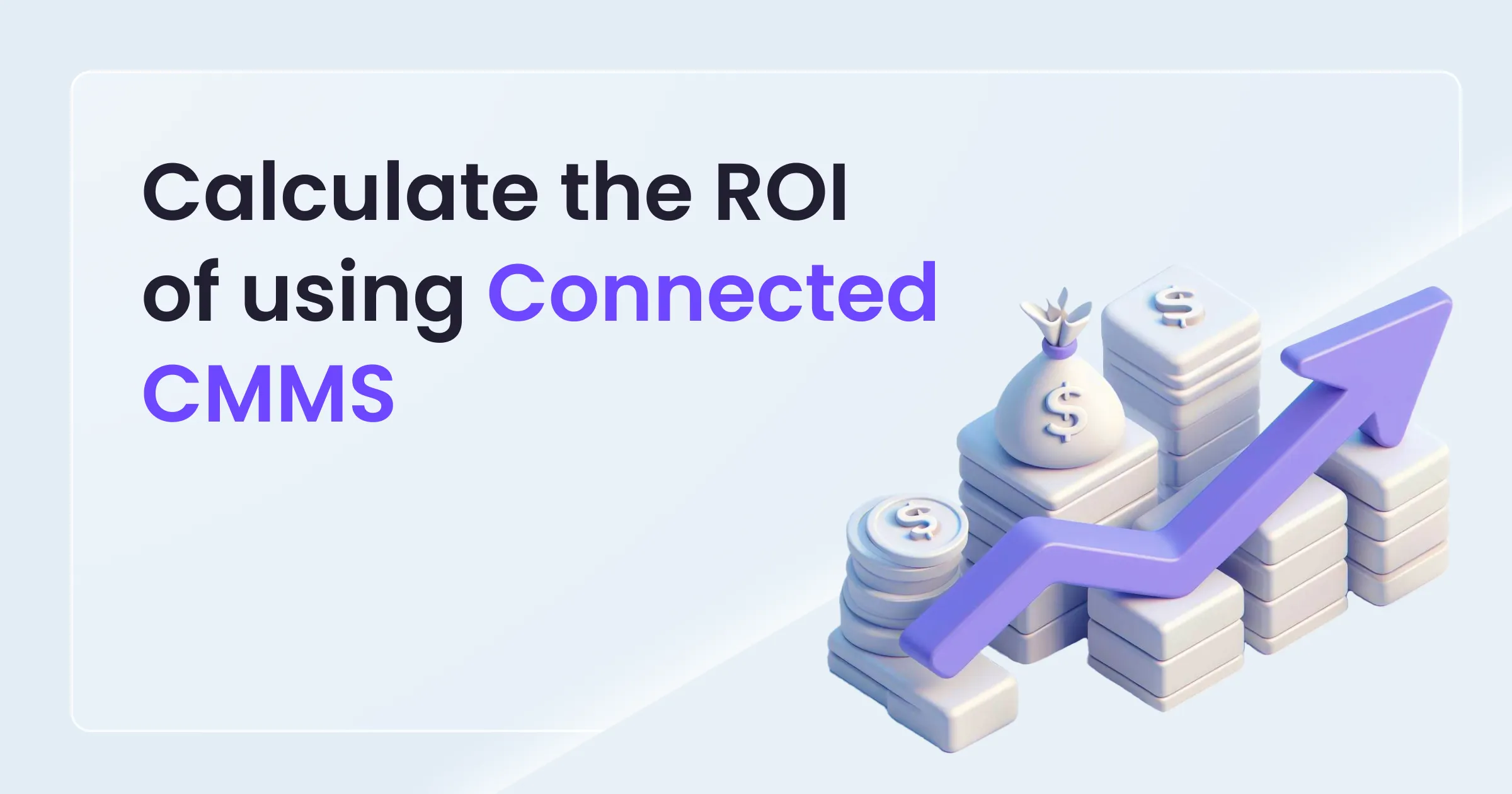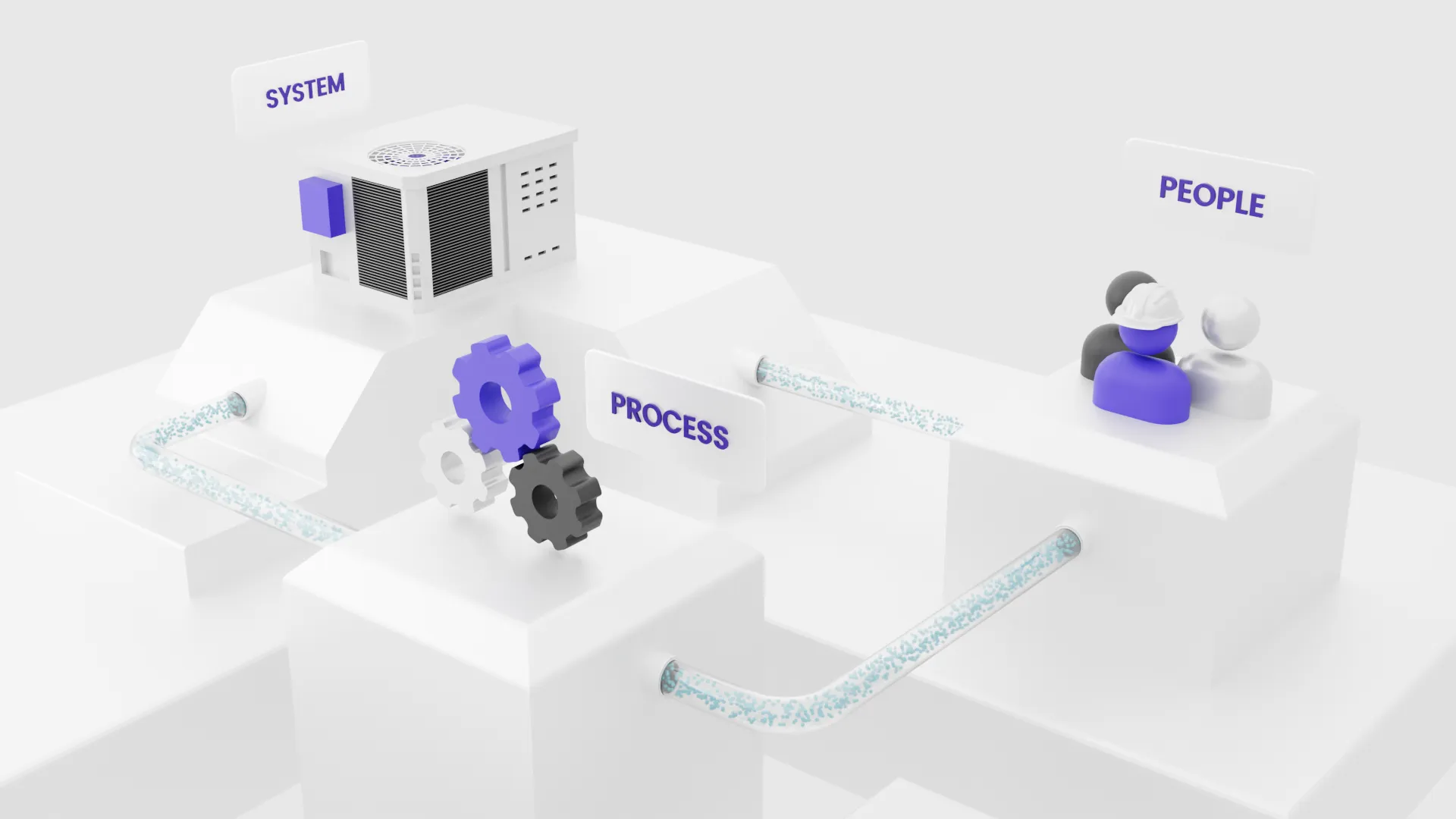Featured Connected CMMS
Why upgrade from legacy CMMS?: An ROI Perspective

The facility operations and maintenance landscape has evolved rapidly; O&M teams are now at the forefront, with a seat on the table and more strategic responsibilities. However, CMMS's core functionality has remained the same since its inception, making them necessary but burdensome cost centers.
Enter Connected CMMS—a game-changer poised to rewrite this narrative by empowering O&M executives to unlock new operational efficiency.
This article delves into the transformative potential of Connected CMMS, shedding light on its distinct advantages over traditional counterparts and demonstrating how it fosters improved ROI."
What makes legacy CMMS an expensive burden today?
For over five decades, traditional CMMSs have dominated operation & facility management, and so has the problem they bring - siloed operations. More gets done in emails and spreadsheets than in the CMMSs, making them nothing more than rigid asset data entry systems.
Their archaic platform infrastructure, built on decades-old technology, hinders these systems from offering the essential features of today's CMMS landscape: seamless integration, configurable workflows, and a personalized user experience.
Consequently, O&M teams are left wrestling with these legacy CMMSs that, ironically, were supposed to boost efficiency but often became costly roadblocks.
Here is why legacy CMMS function solely as cost centers:
- Distributed facility operations data: These systems have limited functionality, forcing O&M teams to implement multiple-point solutions that don't communicate with each other. Consequently, understanding operational performance and making data-driven decisions become mere guessing games.
- Complex unadoptable legacy solutions: Outdated user interfaces and ignorance of user experience in legacy CMMSs result in these systems becoming data graveyards instead of collaborative hubs. This results in minimal user engagement, rendering these systems little more than data storage shelfware products.
- Requires custom coding for configuration: Legacy CMMS does not allow users to create or manage business processes. As a result, O&M teams are forced to rely heavily on either CMMS development teams or dedicate development time and resources to work around the software limitations to align with evolving operational needs.
- Stuck in the desktop era: In most legacy CMMSs, the Mobile app is an optional feature and is not integrated with its core platform or technology stack. Furthermore, they are exclusively designed for field service teams and are inaccessible for the operations & administration office users.
More than just an upgrade: Shifting paradigms with Connected CMMS
More than just a successor to legacy systems, Connected CMMS acts as the linchpin connecting people, processes, and systems throughout the organization. It expands the boundaries of traditional CMMS functionality, moving beyond mere work orders and maintenance tasks.
Connected CMMS automates processes, facilitates stakeholder engagement, and seamlessly integrates IoT-based systems—all within a unified platform. This reimagined approach heralds a new era in facility management, addressing legacy CMMSs limitations and unlocking untapped potential.

The connected CMMS paradigm shift not only addresses existing challenges but also sets the stage for future operational challenges and innovation in facility management.
The next section unveils the tangible benefits of Connected CMMS through a practical lens: the Connected CMMS ROI Calculator. This tool goes beyond theoretical discussions, allowing organizations to quantify operational cost savings and understand the concrete advantages of embracing Connected CMMS.
Calculate the ROI of Connected CMMS for your business
We have carefully crafted this tool with precision to help organizations visualize the impact of adopting Connected CMMS for their organization. The tool considers parameters such as reduced work order execution time and improved labor efficiency to generate the potential cost savings achievable with Connected CMMS. See for yourself:
Here’s how it works:
Step 1: Calculate the Project Cost of Connected CMMS & Total Number of Work Orders for a year
- Formula 1: Projected Cost of Connected CMMS:
Number of O&M users x Industry Avg. Connected CMMS Cost - Formula 2: Total Number of Work Orders in a Year:
Number of Buildings x Work Order per building per year
Step 2: Calculate time and cost saved on in-house & outsourced work orders for a year
- Formula 1: Time saved on in-house/outsourced Work Orders:
{(No. of in-house/outsourced Work Orders x Avg. time taken to complete Work Orders before Connected CMMS) - (No. of in-house/outsourced Work Orders x Avg. time taken to complete Work Orders after Connected CMMS)} - Formula 2: Cost saved on in-house/outsourced Work Order:
{(Time taken to complete Work Order before connected CMMS x Avg. hourly cost of in-house outsourced technicians) - (Time taken to complete Work order after connected CMMS x Avg. hourly cost of in-house/contracted technicians)}
Step 3: Return on Investment Calculation with Connected CMMS
- Formula: Return on Investment with Connected CMMS (%):
[(Cost saved with Connected CMMS - Projected Cost of Connected CMMS)/ (Projected Cost of Connected CMMS) ] * 100
In conclusion: Reimagining CMMS as a cost-saving avenue
As we wrap up, the key takeaway is clear: Connected CMMS is not just an expense—it's an investment in long-term operational efficiency. It's time to shift the narrative from viewing CMMS as a cost to recognizing it as a strategic driver of operational cost savings.
This shift requires understanding how modern CMMS pricing models align cost with outcomes - an alignment that makes ROI measurable and defensible.
To explore the transformative power of Connected CMMS for your organization, take action today. Dive into the ROI Calculator, understand the tangible benefits, and unlock a new era of efficiency.


